Tokyo-based studio Schemata Architects gives new life to a sentō
A Japanese sentō (銭湩) is a kind of traditional public bath where people go to relax and take a bath. In Japan, these bathhouses have a long history and are highly significant culturally.
Typically, a sentō has distinct spaces designated for the needs of men and women. It’s a shared area for rest, socializing, and bathing. When visiting a sentō, guests change into the bathing area after taking off their clothes in the changing room. Once inside, they take a communal hot bath after properly cleaning themselves at individual stations.
In addition, a lot of sentō provide several kinds of baths, like hot tubs, cold baths, and even saunas. Most sentō water is heated; however, some sentō also offer mineral-rich water and are said to have health advantages. Locals love sentō for their healing and communal qualities.
Sentō has a long history that began in ancient Japan. Since their founding during the Nara period (710–794), they have played a crucial role in Japanese culture. Sentō, or public baths, became increasingly prevalent during the Edo period (1603–1868). The population of Japan increased during this period, and many places had limited access to clean water.
Consequently, public bathhouses functioned as essential hubs for social interaction and sanitation. Even though modern Japanese homes increasingly have private restrooms, sentō retain their cultural and social significance. For people who may have smaller living spaces or prefer a social atmosphere, they are nevertheless a desirable alternative.
Sentō frequently have unique architectural and design features, such as vibrant curtains, noren (fabric dividers), and occasionally creative tiles or murals. A sentō’s admission fee is typically quite reasonable, making a large variety of people able to visit.
While the number of sentō has declined as a result of shifting bathing practices, some traditional bathhouses have survived and draw tourists eager to partake in this cultural custom. Sentō have seen a rise in popularity recently, and attempts have been made to update and rejuvenate them. Modern conveniences are now included in certain sentō while maintaining their original charm.
However, the opportunity arises for Lucio Modesto, an old Roman spa engineer, to seize the inventions of a Japanese public bathhouse and transport them back in time when he unexpectedly finds himself there. This is depicted in Mari Yamazaki’s manga Thermae Romae, which takes the reader on a tour of the fascinating world of sentō.
According to this article, Tokyo‘s ancient sentō, Koganeyu, has made the decision to reinvent itself. While the historic pools are preserved in accordance with tradition, Schemata Architects’ idea incorporates more contemporary features to appeal to a diverse audience, such as a sauna and a beer bar, which make use of the vacant spaces in the warehouse and machine room.
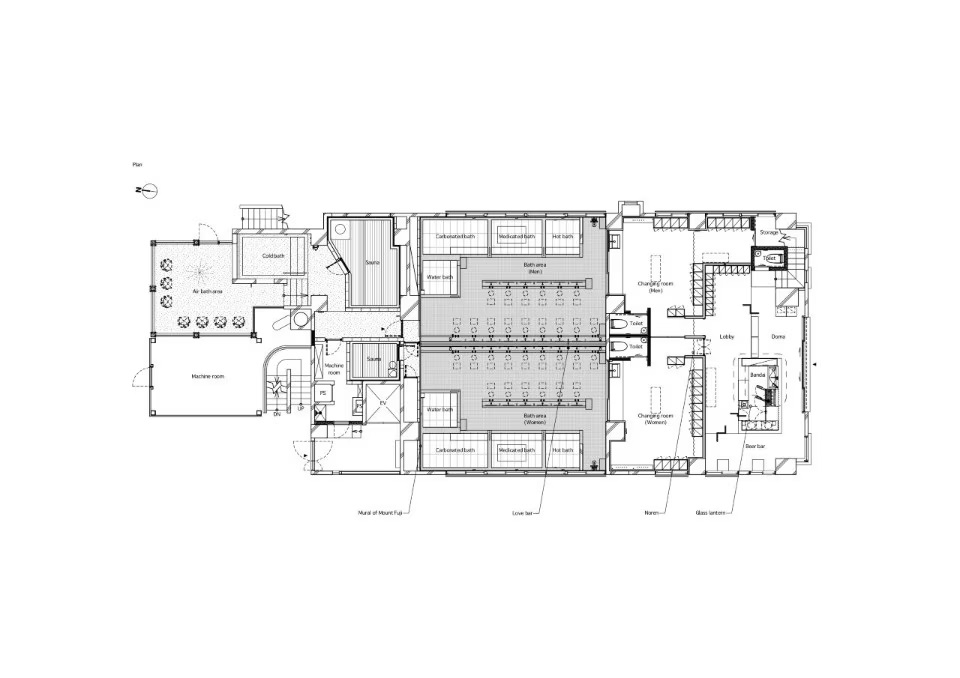
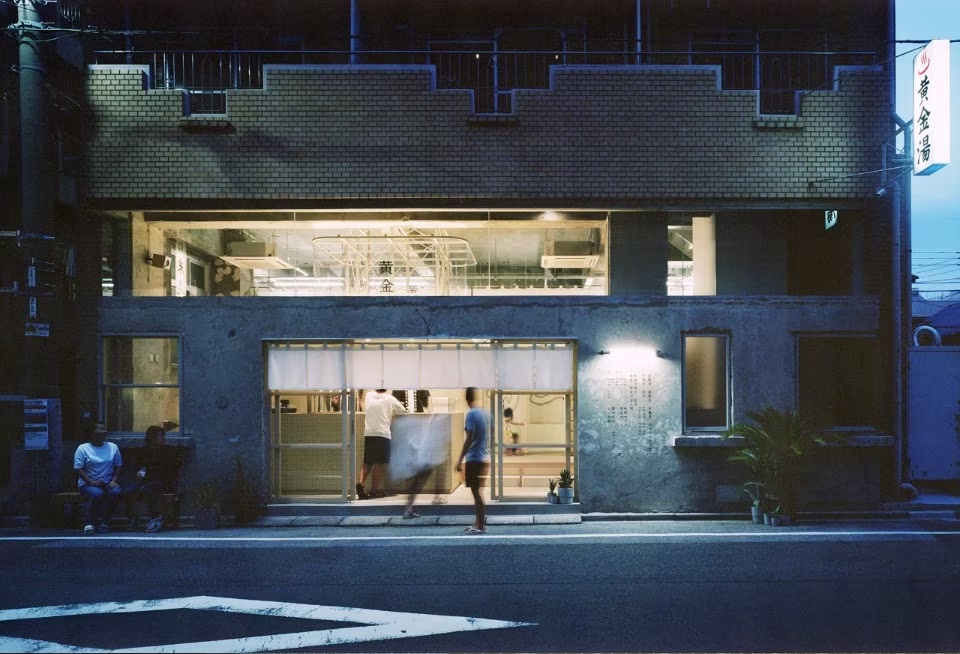
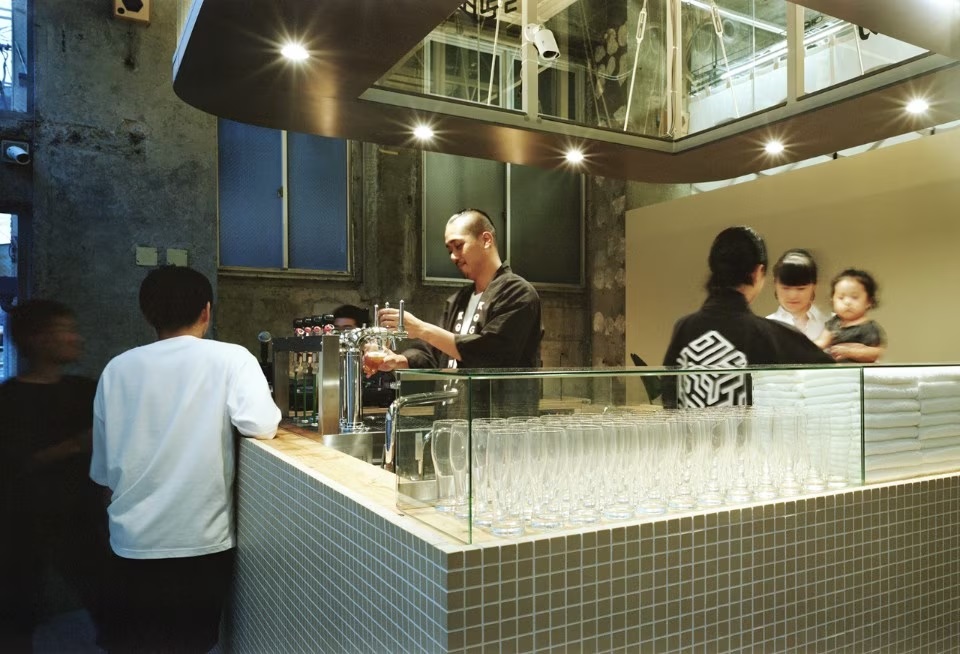
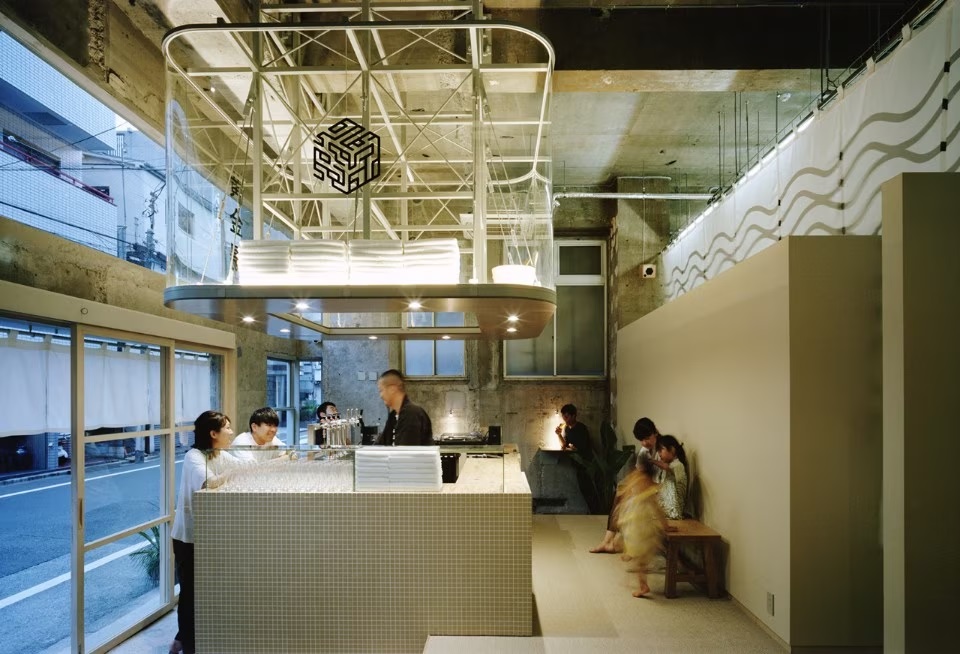
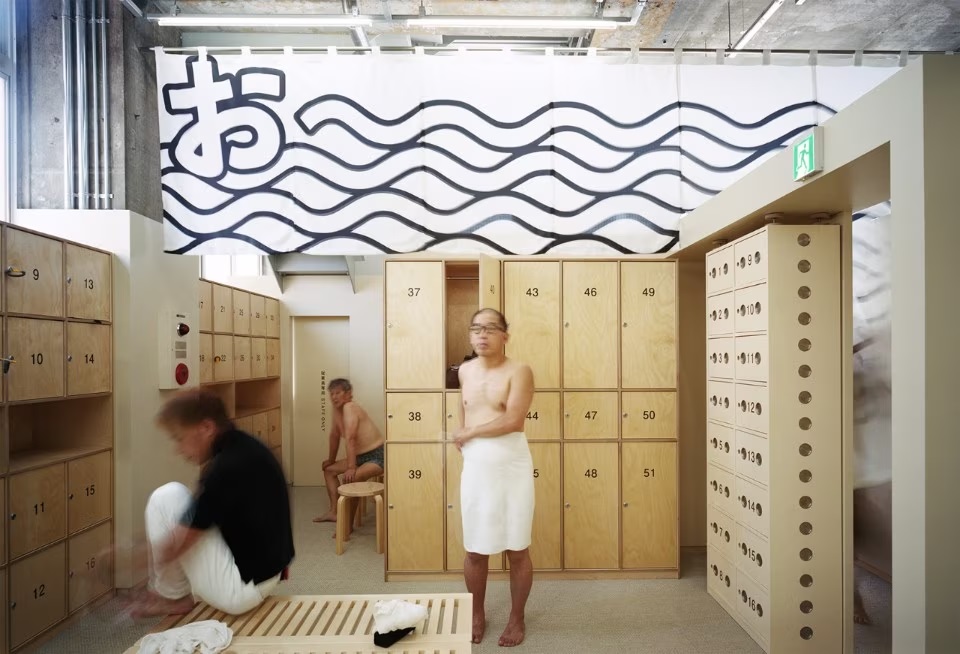
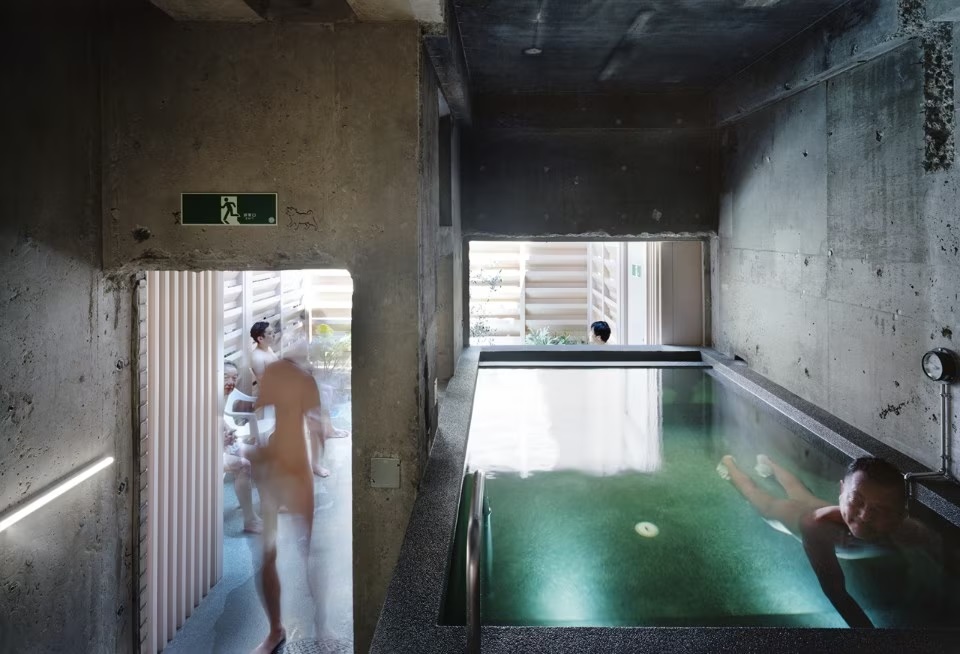
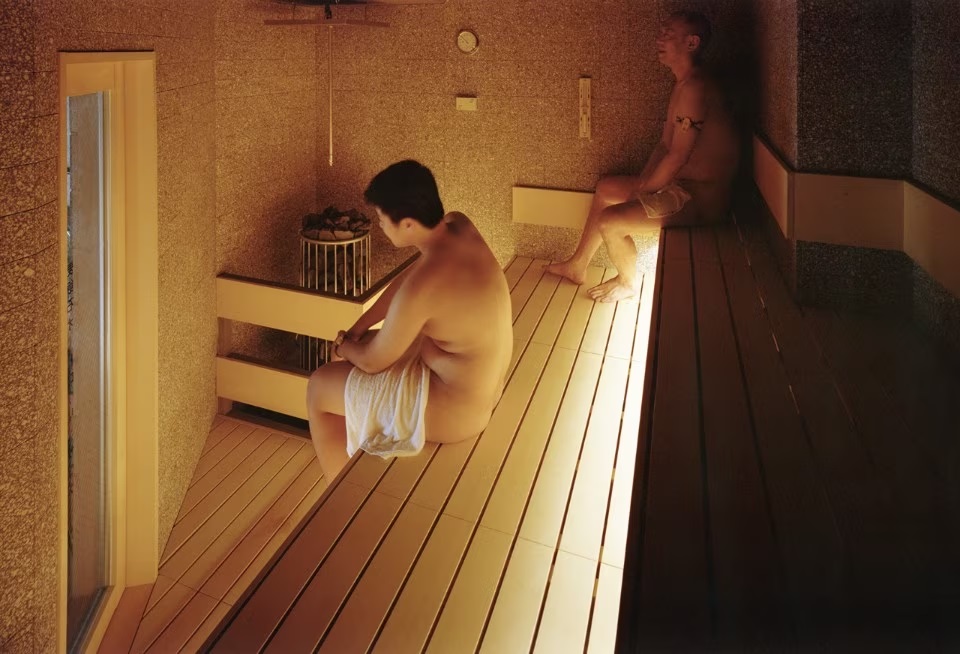
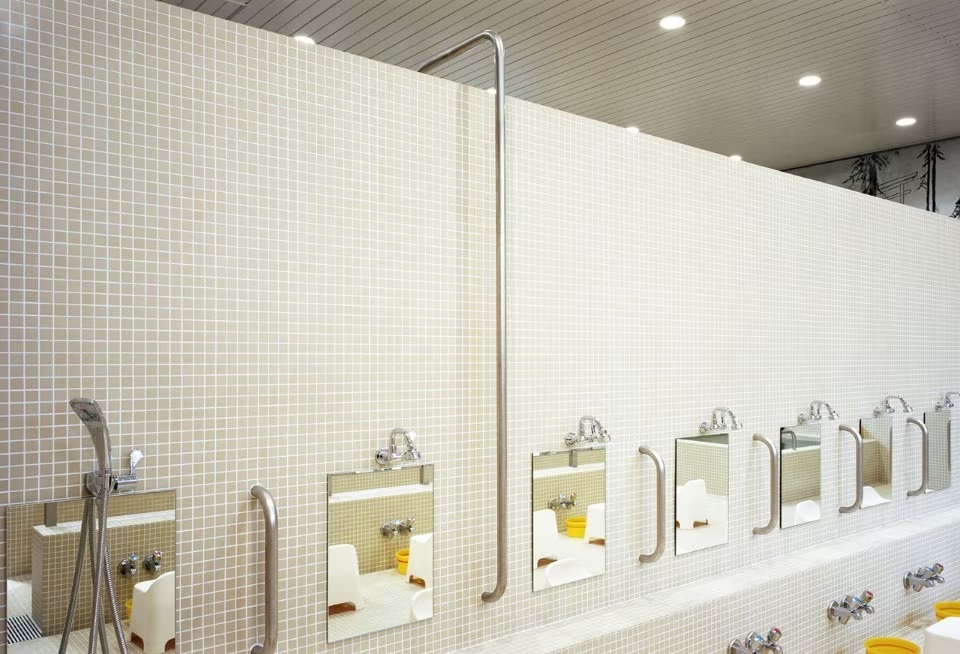
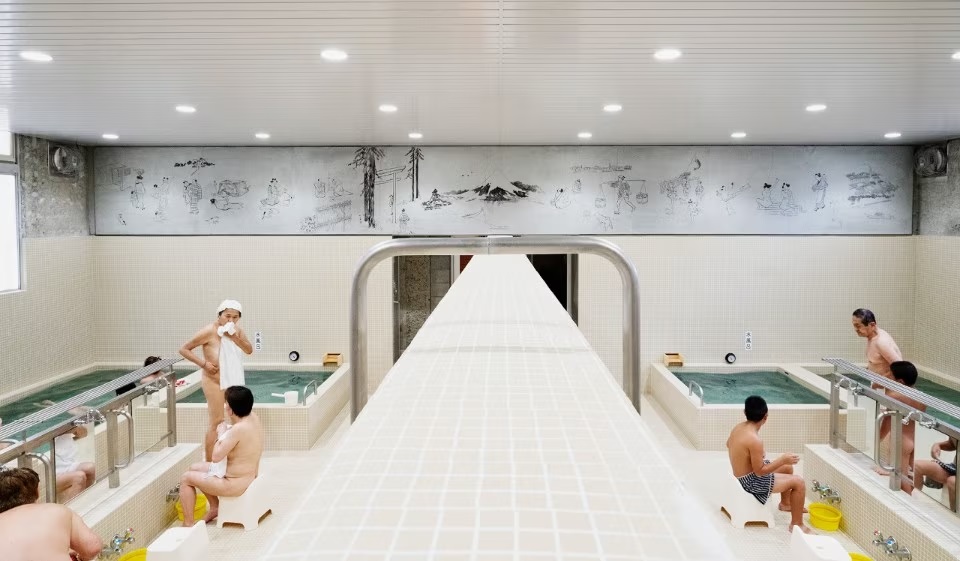

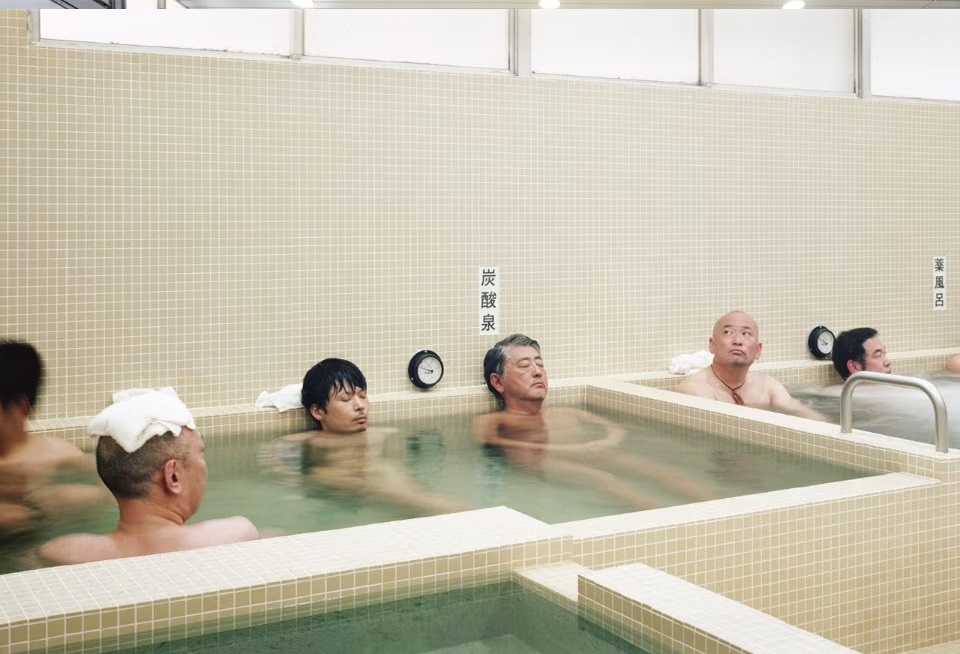
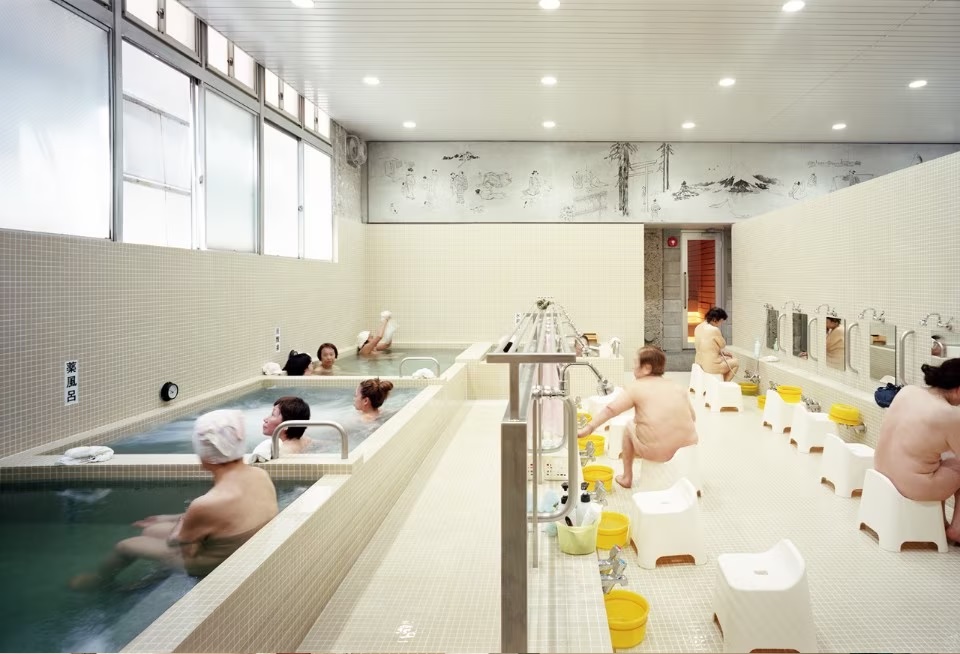
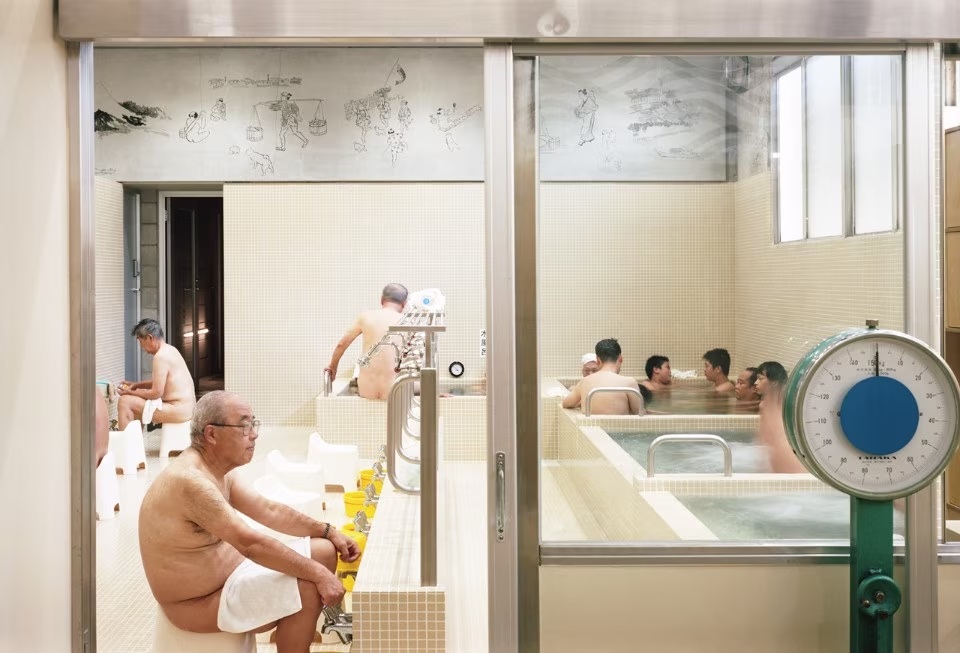
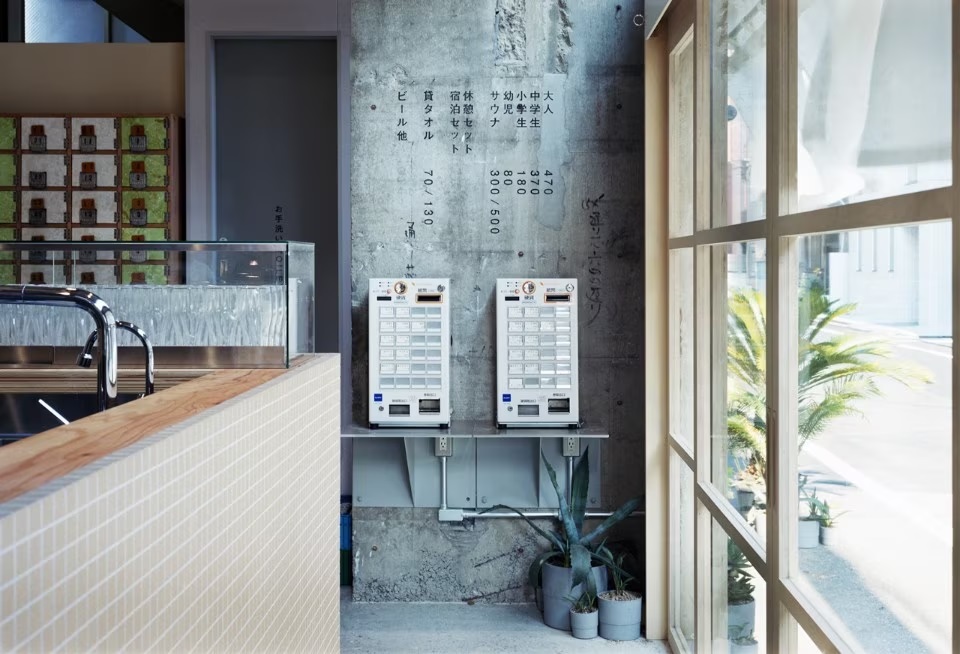
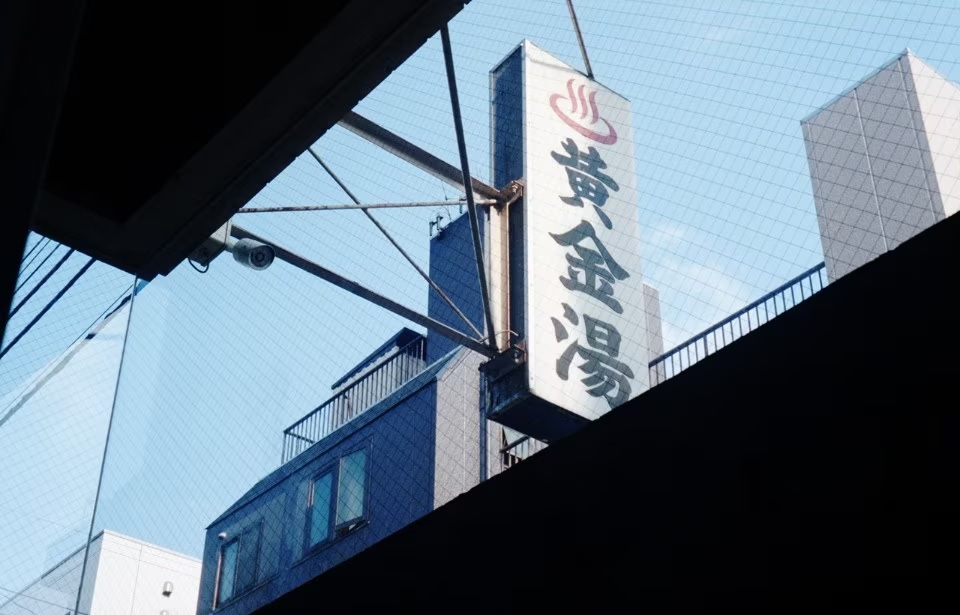
Similar to traditional sentō, the main pool area is symmetrically split into male and female parts by a wall that is 2.25 meters high and open at the end. This feature was employed to facilitate communication between the two regions. The section in question has pools with varying temperatures, from medicated to hot, and there’s a tiny cold-water pool next to the sauna that’s connected to the outside.
Yoriko Hoshi’s work is shown along the two regions of the interiors, which are covered in light beige tiles and concrete and include a mural with Mount Fuji in the background. The area also has a dressing room with Iichiro Tanaka-designed dividing drapes and wooden furnishings, as well as a bandai (beige tile) welcome area at the entry with a beer bar.
Photos by Yurika Kono
